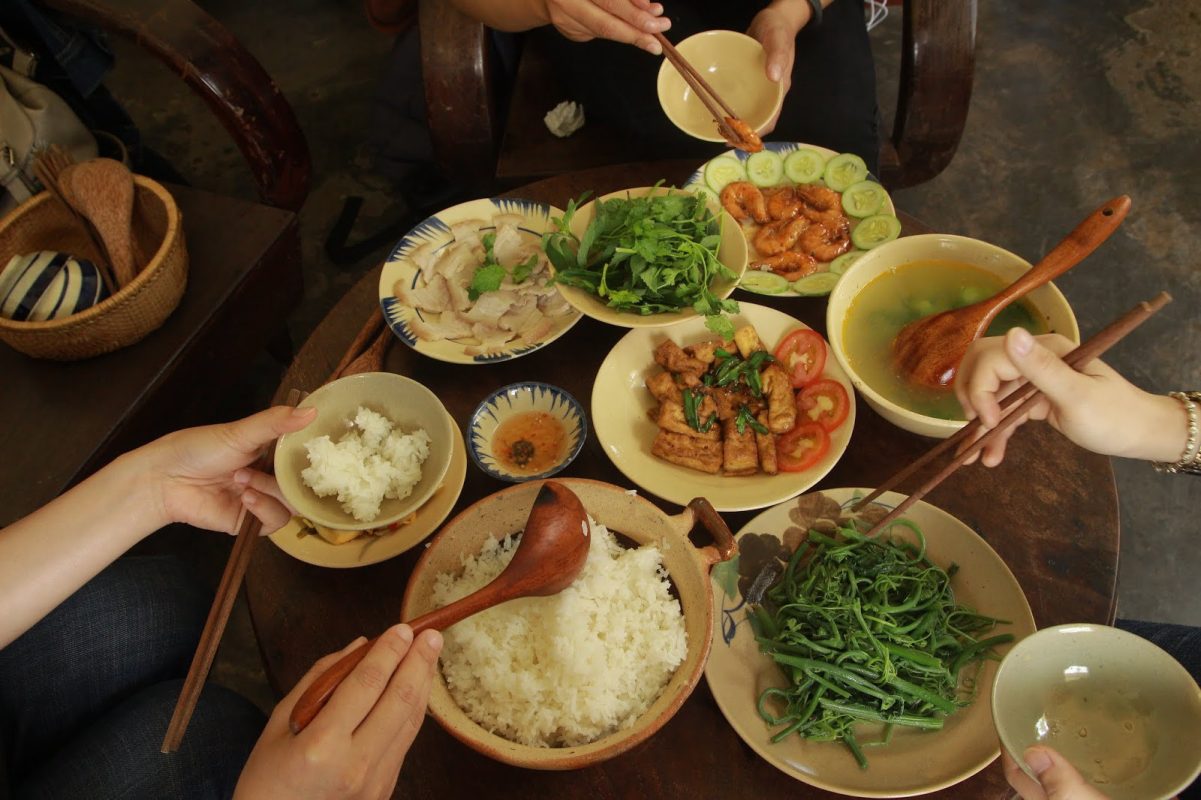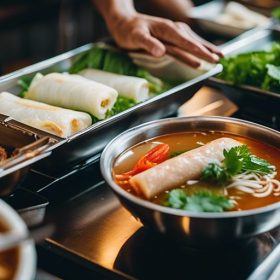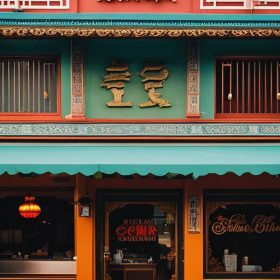Vietnamese cuisine is known for its bold flavors, fresh ingredients, and unique cooking techniques. One aspect of Vietnamese cuisine that sets it apart from others is the use of live food. Live food refers to ingredients that are still alive at the time of consumption, whether it be insects, seafood, or even animals. This practice has a long history in Vietnam and is deeply ingrained in the country’s culture and traditions.
What is Live Food and Why is it Popular in Vietnam?
Live food can be defined as any type of food that is consumed while still alive. This can include insects like crickets and worms, seafood like clams and oysters, and even animals like frogs and snakes. In Vietnam, live food is incredibly popular and can be found in markets, street stalls, and restaurants throughout the country.
There are several reasons why live food is so popular in Vietnam. Firstly, it is believed to be fresher and more flavorful than cooked or processed food. By consuming live food, Vietnamese people can experience the natural taste and texture of the ingredients. Additionally, live food is seen as a symbol of prosperity and good luck in Vietnamese culture. It is often served during special occasions and celebrations to bring good fortune to those who consume it.
The Different Types of Live Food in Vietnam: From Insects to Seafood
Vietnam offers a wide variety of live food options for adventurous eaters. Insects such as crickets, worms, and beetles are commonly consumed in Vietnam. They are often deep-fried or stir-fried with spices to enhance their flavor. Seafood is another popular choice for live food in Vietnam. Clams, oysters, and snails are often served raw or lightly cooked with herbs and dipping sauces.
One popular live food dish in Vietnam is “banh lot,” which consists of live worms mixed with rice noodles, herbs, and a spicy sauce. Another popular dish is “oc len xao dua,” which features live snails cooked with coconut milk and spices. These dishes showcase the unique flavors and textures that live food can offer.
Preparing and cooking live food in Vietnam requires skill and precision. The ingredients must be handled carefully to ensure their freshness and safety. Insects are often cleaned and cooked quickly to preserve their natural flavors. Seafood is typically kept alive until the moment it is cooked to ensure its freshness. The cooking methods used for live food in Vietnam vary depending on the type of ingredient and the desired flavor profile.
The Health Benefits of Live Food: A Staple in Vietnamese Cuisine
Live food is not only popular in Vietnam for its taste and cultural significance, but also for its health benefits. Live food is often considered to be more nutritious than cooked or processed food because it retains more of its natural vitamins, minerals, and enzymes.
Insects, for example, are a great source of protein and contain essential amino acids that are beneficial for muscle growth and repair. They are also low in fat and high in fiber, making them a healthy snack option. Seafood, such as clams and oysters, are rich in omega-3 fatty acids, which are known to promote heart health and reduce inflammation.
In addition to their nutritional value, live foods are believed to aid in digestion. The enzymes present in live food help break down complex molecules, making it easier for the body to absorb nutrients. This can lead to improved digestion and overall gut health.
Compared to processed or cooked foods, live food is often lower in calories and contains fewer additives or preservatives. This makes it a healthier option for those looking to maintain a balanced diet.
The Cultural Significance of Live Food in Vietnam: A Symbol of Prosperity and Good Luck
Live food holds a significant place in Vietnamese culture and traditions. It is often associated with prosperity and good luck, and is believed to bring blessings to those who consume it. Live food is commonly served during special occasions and celebrations, such as weddings, birthdays, and Lunar New Year.
In Vietnamese culture, the act of eating live food is seen as a way to connect with nature and show respect for the ingredients. It is believed that by consuming live food, one can absorb the energy and vitality of the living organisms.
Live food is also deeply rooted in Vietnamese folklore and superstitions. For example, it is believed that eating live worms can bring good luck and ward off evil spirits. Similarly, consuming live seafood is thought to bring longevity and good fortune.
The Role of Live Food in Vietnamese Festivals and Celebrations
Live food plays a significant role in Vietnamese festivals and celebrations. During the Lunar New Year, also known as Tet, it is customary to serve live seafood dishes to symbolize abundance and prosperity for the coming year. Oysters, clams, and snails are often included in the festive spread.
Another festival that features live food is the Mid-Autumn Festival, which celebrates the harvest season. During this time, mooncakes filled with live worms or insects are often enjoyed as a special treat. These mooncakes are believed to bring good luck and happiness to those who eat them.
Live food is also served during weddings and other important milestones in Vietnamese culture. It is seen as a way to honor guests and show hospitality. The presence of live food at these events signifies abundance and good fortune for the couple or individual being celebrated.
The Challenges of Introducing Live Food to Tourists: A Clash of Cultures
While live food is deeply ingrained in Vietnamese culture, it can be a challenging concept for tourists to grasp. Many Western cultures have different attitudes towards live food, often associating it with unhygienic or unsafe practices. This clash of cultures can make it difficult for tourists to embrace the idea of trying live food in Vietnam.
Additionally, the unfamiliarity of live food can be intimidating for some tourists. The thought of consuming insects or live seafood may be off-putting to those who are not accustomed to such culinary experiences. Overcoming these cultural barriers requires open-mindedness and a willingness to step outside of one’s comfort zone.
The Ethics of Eating Live Food: A Controversial Topic in Vietnam
The ethics of eating live food is a topic of debate in Vietnam. Some argue that it is cruel and inhumane to consume live animals or insects. They believe that all living creatures should be treated with respect and compassion, and that killing them for food is unnecessary.
On the other hand, proponents of eating live food argue that it is a natural part of the food chain and has been practiced for centuries. They believe that as long as the animals or insects are killed quickly and humanely, there is no ethical issue with consuming them.
Cultural and ethical considerations play a significant role in the debate over eating live food. It is important to respect the beliefs and traditions of different cultures while also considering the welfare of animals and insects.
The Risks of Eating Live Food: Health Concerns and Safety Measures
While live food can offer unique flavors and cultural experiences, there are potential health risks associated with consuming it. Live food, especially seafood, can carry bacteria or parasites that can cause foodborne illnesses if not handled or cooked properly.
To reduce these risks, it is important to choose reputable vendors who follow proper hygiene practices. Live seafood should be kept alive until the moment it is cooked to ensure its freshness and safety. Insects should be sourced from clean and reliable sources to minimize the risk of contamination.
It is also important for consumers to practice good hygiene when handling live food. Hands should be washed thoroughly before and after handling live food to prevent the spread of bacteria.
How to Try Live Food in Vietnam: Tips for the Adventurous Traveler
For adventurous travelers interested in trying live food in Vietnam, there are a few tips to keep in mind. Firstly, it is important to start with small portions and gradually work your way up. Trying a small taste of live food can help you gauge your comfort level and decide if you want to try more.
It is also recommended to choose reputable vendors who have a clean and hygienic environment. Look for stalls or restaurants that have a high turnover of customers, as this indicates that the ingredients are fresh and safe to consume.
When trying live food, it is important to be open-minded and respectful of local traditions. Embrace the experience as an opportunity to learn about Vietnamese culture and cuisine.
Embracing the Diversity of Vietnamese Cuisine, Live Food and All.
Live food is a fascinating aspect of Vietnamese cuisine that offers unique flavors, cultural significance, and health benefits. It is deeply rooted in Vietnamese culture and traditions, and plays a significant role in festivals and celebrations.
While live food may be challenging for some tourists to embrace, it is important to approach it with an open mind and respect for local traditions. Trying live food can be a rewarding and memorable experience that allows you to connect with Vietnamese culture on a deeper level.
In conclusion, live food is just one example of the diversity and richness of Vietnamese cuisine. By embracing all aspects of Vietnamese cuisine, including live food, we can gain a greater appreciation for the country’s culinary traditions and cultural heritage. So next time you find yourself in Vietnam, don’t be afraid to try something new and embark on a culinary adventure unlike any other.

Cuong Nguyen is a talented writer and experienced waitress at Vietnampalace.net, a renowned Vietnamese restaurant that offers an extensive menu of authentic Vietnamese cuisine. With a background in the competition of Vietnamese cuisine, Cuong brings a wealth of knowledge and expertise to the dining experience. From delicious pho dishes to fresh spring rolls, Cuong ensures that every meal is made with the freshest ingredients and authentic flavors.With exceptional service and a friendly atmosphere, Cuong takes pride in providing a memorable dining experience for every customer.
Whether you’re a vegetarian looking for options or a meat lover craving the flavors of traditional Vietnamese dishes, Cuong guarantees a delightful culinary adventure. So, visit Vietnampalace.net and let Cuong guide you through the tantalizing world of Vietnamese cuisine.



